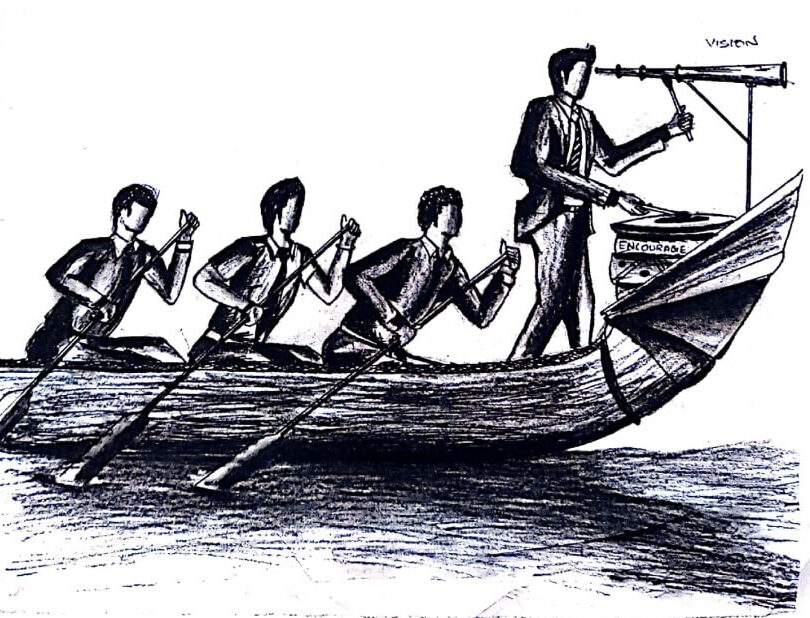Meaning of Leadership
Leadership is the activity of influencing people to strive willingly for group objectives. Leadership has been described as “a process of social influence in which one person can enlist the aid and support of others in the accomplishment of a common task”, although there are alternative definitions of leadership.
For example, some understand a leader simply as somebody whom people follow or as somebody who guides or directs others While others define leadership as “organizing a group of people to achieve a common goal”.
Good leaders are made not born. If you have the desire and willpower, you can become an effective leader. Good leaders develop through a never ending process of self-study, education, training, and experience.
To inspire your workers into higher levels of teamwork, there are certain things you must be, know, and, do. These do not come naturally, but are acquired through continual work and study.
Good leaders are continually working and studying to improve their leadership skills; they are NOT resting on their laurels.
Definition of Leadership
Leadership is “The process of encouraging and helping others to work enthusiastically towards objectives”.
Leadership “Is the behaviour of an individual when he is directing the activities of a group towards a shared goal”.
Leadership is a process by which a person influences others to accomplish an objective and directs the organization in a way that makes it more cohesive and coherent.
Leadership is a process whereby an individual influences a group of individuals to achieve a common goal.

State the Importance of Leadership
-
Leadership refers to the ability of one individual to influence others.
-
The influence is exercised to change the behaviour of others.
-
Behaviour is changed through non-coercive means.
-
Change of behaviour is caused with an objective of achieving shared goals.
-
Leadership is a group phenomenon. It involves interaction between two or more people.
-
Direction to accomplish the organizational goals successfully.
-
A clear vision: Setting a clear vision and communicating it effectively provides employees with an understanding of the organizational direction and allows them to clearly understand their roles and responsibilities.
-
Effective planning: Structured approach is able to generate a plan of action that will most effectively meet the organizational goals. An inclusive planning process also provides the opportunity for people to identify, contribute to, understand and achieve well defined objectives.
-
Inspiration and motivation: The commitment and enthusiasm of a business leader shapes the common goals of the organisation and provides inspiration and motivation for people to perform at a high level.
-
New Ideas: Encouragement of people to openly contribute and discuss new ideas in a positive environment makes use of their diverse experience and ideas to improve a business.
-
Employee relations: An open and engaging relationship between a leader and their team members demonstrates that they are valued as an integral part of the organisation, creating a sense of ownership among team members and developing a closer alignment between individual and team objectives.
-
Crisis management: Good business leadership can help a team remain focused during a time of crisis, reminding the team members of their achievements and encourage them to set short term, achievable goals.
| Read More Topics |
| Definition and meaning for impression management |
| Explain characters and components of attitude |
| Define value and sources of value |




